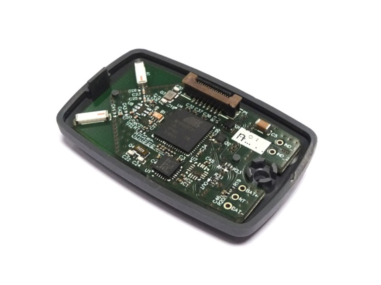Section: New Software and Platforms
Platforms
Zyggie
Keywords: Health - Biomechanics - Wireless body sensor networks - Low power - Gesture recognition - Hardware platform - Software platform - Localization
Scientific Description: Zyggie is a hardware and software wireless body sensor network platform. Each sensor node, attached to different parts of the human body, contains inertial sensors (IMU) (accelerometer, gyrometer, compass and barometer), an embedded processor and a low-power radio module to communicate data to a coordinator node connected to a computer, tablet or smartphone. One of the system’s key innovations is that it collects data from sensors as well as on distances estimated from the power of the radio signal received to make the 3D location of the nodes more precise and thus prevent IMU sensor drift and power consumption overhead. Zyggie can be used to determine posture or gestures and mainly has applications in sport, healthcare and the multimedia industry.
Functional Description: The Zyggie sensor platform was developed to create an autonomous Wireless Body Sensor Network (WBSN) with the capabilities of monitoring body movements. The Zyggie platform is part of the BoWI project funded by CominLabs. Zyggie is composed of a processor, a radio transceiver and different sensors including an Inertial Measurement Unit (IMU) with 3-axis accelerometer, gyrometer, and magnetometer. Zyggie is used for evaluating data fusion algorithms, low power computing algorithms, wireless protocols, and body channel characterization in the BoWI project.
The Zyggie V2 prototype includes the following features: a 32-bit microcontroller to manage a custom MAC layer and processe quaternions based on IMU measures, and an UWB radio from DecaWave to measure distances between nodes with Time of Flight (ToF).



